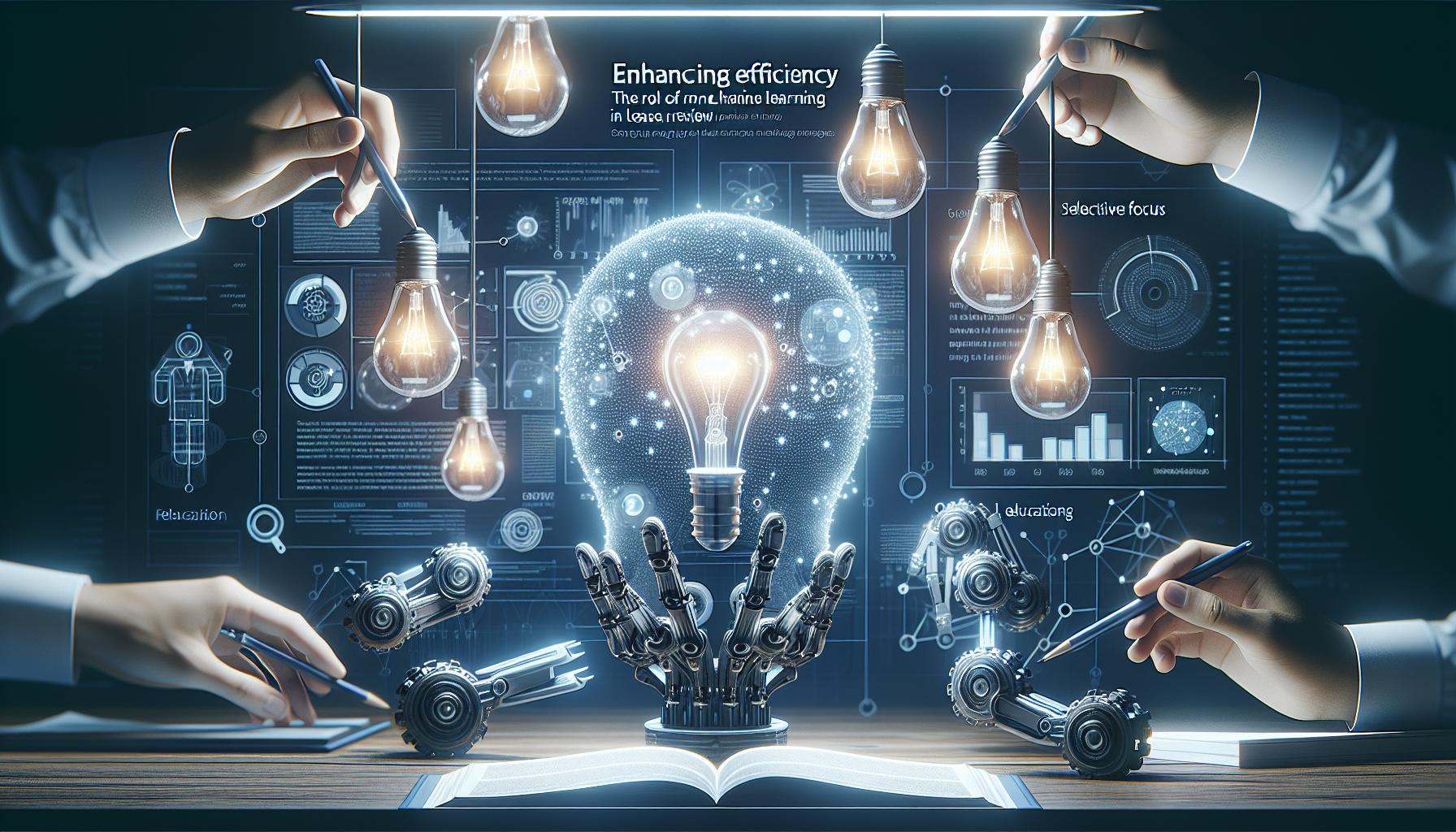Navigating complex lease agreements can be daunting, frequently enough leading to overlooked details and costly mistakes. As businesses increasingly rely on technology for efficiency, leveraging AI-powered document analysis tools is crucial. Discover how integrating these advanced solutions not only simplifies lease review processes but also enhances accuracy and saves valuable time.
Understanding Lease Review: The Importance of Document Analysis
the complexities involved in leasing agreements can often feel overwhelming, with critical terms hidden within pages of legal jargon. Understanding the nuances of lease reviews is paramount for ensuring that both parties are protected, obligations are clear, and potential pitfalls are avoided. Leveraging technology, specifically through tools highlighted in the *lease Review AI Prompt: Streamline Document Analysis with Ease*, can vastly simplify this process.
Why Lease Review Matters
Conducting a thorough lease review is essential for various reasons:
- risk Mitigation: Identifying vague or ambiguous clauses can prevent future disputes. A detailed document analysis enables parties to understand their rights and responsibilities clearly.
- Financial Security: Failing to comprehend the financial obligations such as rent escalation, maintenance costs, or exit fees coudl result in unforeseen expenses.
- regulatory Compliance: Certain leases must comply with local laws and regulations.A thorough review ensures adherence to these legal requirements.
- Negotiation Leverage: Armed with insights from a detailed analysis, tenants and landlords are better equipped to negotiate favorable terms.
Utilizing AI for Document Analysis
the integration of AI technology in lease review processes revolutionizes the traditional methods of document analysis. These systems can quickly analyze lengthy leases, highlighting essential sections and summarizing terms that require attention. As an example,the *Lease Review AI Prompt: Streamline Document Analysis with Ease* assists users in pinpointing critical clauses such as renewal options,termination rights,and liability terms without sifting through every page individually.
| clause Type | Importance | Risks of Ignoring |
|---|---|---|
| Renewal Options | ensures the ability to extend lease terms | Loss of renewed rights,unexpected rent increases |
| Termination Rights | protects against premature lease exits | Financial penalties,legal disputes |
| Liability Terms | Clarifies responsibilities in case of damages | Unexpected liabilities,financial drain |
By adopting AI-driven tools,parties can enhance their accuracy in lease assessments while saving time and reducing human error. This blend of technology and diligence not only fosters better understanding but also propels smoother transactions, proving that strategic planning is vital in the world of leasing. Investing time and resources in a robust lease review process enables all parties to approach their agreements with confidence.
How AI is Transforming the Lease Review process
Revolutionizing Lease Review with Intelligent Automation
The lease review process has long been a daunting task for real estate professionals, requiring meticulous attention to detail and extensive expertise in contract law. However, advancements in artificial intelligence are transforming this critical function, enabling teams to operate more efficiently and effectively. With AI-driven systems, the time it takes to analyze, identify, and address potential issues in lease agreements has drastically reduced, paving the way for enhanced accuracy and compliance.
Key Benefits of AI in lease Review
Adopting AI in the lease review process brings several tangible benefits:
- Speed: AI algorithms can quickly scan and interpret the language in leases, significantly decreasing the time required for document analysis.
- Accuracy: By minimizing human error, AI ensures that critical terms and clauses are not overlooked, leading to more reliable lease agreements.
- Cost Efficiency: Reduced labor hours and streamlined processes directly translate into cost savings for companies.
- Scalability: AI solutions can easily handle increasing volumes of documents, allowing businesses to scale their operations without a corresponding rise in workload.
Impact on Human Resources and Productivity
As AI takes on repetitive and time-consuming tasks, legal and real estate teams can redirect their focus towards higher-level strategic functions. As a notable example, seasoned professionals can spend more time negotiating favorable lease terms or building relationships with clients rather than getting bogged down in the minutiae of document analysis. This shift not only enhances productivity but also empowers teams to deliver extraordinary service and maintain strong client relations.
A Real-World Example: Using AI in action
A notable case is that of a large commercial real estate firm that integrated AI into their lease review process. By implementing a lease review AI prompt that streamlines document analysis, they reported a 60% reduction in review time for standard lease agreements. This allowed them to onboard new projects more quickly and respond to client inquiries with improved agility, showcasing the enormous potential of AI in transforming traditional workflows.
| Traditional Lease Review Process | AI-Enhanced Lease Review Process |
|---|---|
| Manual document analysis | Automated scanning of agreements |
| High risk of human error | Consistent accuracy and oversight |
| Lengthy review timelines | Rapid document turnaround |
| Heavy reliance on legal teams | Reduction in unnecessary legal costs |
With the right tools and systems in place, businesses are finding limitless possibilities in how they approach lease reviews. Empowering teams with the Lease Review AI Prompt: Streamline document Analysis with Ease not only accelerates processes but also ensures that organizations remain competitive in an ever-evolving landscape.
Key Features of AI-Powered Document Analysis Tools
Unlocking Efficiency with AI-Powered Document Analysis
In an era where speed and precision can make or break a competitive edge, AI-powered document analysis tools have emerged as game-changers, especially when it comes to lease reviews. These advanced technologies not only save time but also enhance accuracy in identifying critical elements within dense legal texts. Below are some of the standout features that make these tools indispensable for professionals dealing with lease agreements.
- Automated Data Extraction: Modern AI tools can swiftly pull relevant data from lengthy documents, ensuring that key terms like rental rates, lease durations, and renewal clauses are extracted with minimal human input. This feature significantly reduces the time spent on manual review.
- Natural Language Processing (NLP): Using NLP, these tools can interpret and analyze lease documents much like a human reviewer. They can understand context, identify ambiguous terms, and suggest clarifications, allowing for a more nuanced approach to document analysis.
- Risk Assessment Tools: Advanced AI software often includes built-in risk assessment capabilities. By analyzing specific clauses against ancient data and industry standards, the tools can flag potential issues or unfavorable terms, enabling informed decision-making.
- Collaboration Features: Many platforms come equipped with features that facilitate seamless collaboration among team members. This includes the ability to share notes or feedback and track changes in real-time, ensuring all stakeholders stay aligned throughout the review process.
Data visualization and Reporting
Another powerful aspect of AI-powered document analysis tools is their ability to convert complex data into intuitive visual formats. This capability not only aids in understanding but also enhances presentations to stakeholders.As a notable example, summarizing key insights or trends in a visually appealing dashboard can significantly influence strategic decisions.
| Feature | Benefit |
|---|---|
| Data visualization | Simplifies complex data, making it accessible and actionable. |
| Custom Reporting | Generates tailored reports based on specific criteria, saving time and enhancing accuracy. |
| Integration Capabilities | Seamlessly connects with existing management systems, streamlining workflows. |
incorporating AI into lease reviews transforms the hectic process of document analysis into a streamlined, efficient workflow. Whether it’s through automated data extraction, enhanced collaboration, or robust reporting, these tools are built to handle the complexities of lease agreements with ease. By leveraging the features of AI-powered document analysis tools, professionals can focus on strategic initiatives rather than getting bogged down in paperwork.
Enhancing Efficiency: The Role of Machine Learning in Lease Review
Revolutionizing Lease Management
In todayS fast-paced commercial environment, managing leases efficiently is essential for organizations aiming to reduce costs and streamline operations. Machine learning technologies are reshaping how businesses approach lease reviews, dramatically improving the speed and accuracy of analyzing complex legal documents. By automating tedious tasks, such as extracting key terms and identifying potential risks, organizations can focus their resources on strategic decision-making rather than slogging through mountains of paperwork.
Harnessing the Power of AI in Document Analysis
the integration of machine learning into lease review processes enables faster turnaround times and enhances accuracy.One of the most significant impacts of the Lease Review AI Prompt: Streamline Document Analysis with Ease is its capability to:
- Automate Data Extraction: Machine learning algorithms can swiftly identify and extract critical information such as lease durations, payment terms, and renewal clauses.
- Identify Anomalies: Advanced models can detect unusual terms or conditions that might pose a risk to the leasing party, allowing for timely interventions.
- Improve Collaboration: by providing a clear, structured format of lease data, machine learning tools enhance interaction among stakeholders, facilitating collaborative decision-making.
Practical Applications and Real-World Examples
Implementing machine learning in lease review isn’t just a theoretical possibility—real-world applications show tangible benefits. As an example, a prominent real estate firm adopted machine learning tools for their lease portfolio management.They reported a 50% reduction in review time,significantly decreasing labor costs and allowing their legal team to focus on higher-value work. Tools utilizing the Lease Review AI Prompt have also been shown to improve compliance by ensuring that all necessary legal stipulations are adhered to, thus minimizing potential disputes.
Using machine learning not only sharpens the efficiency of lease review but also equips organizations with the confidence to make informed decisions quickly. As companies increasingly adopt these advanced technologies, those who leverage machine learning effectively will maintain a competitive edge in lease management.
| Benefit | Impact |
|---|---|
| Reduced Review Time | Up to 50% less time spent on document analysis |
| Enhanced Accuracy | higher identification rates of key clauses and risks |
| Cost Savings | Lower operational costs through automation |
Embracing machine learning in the lease review process not only enhances efficiency but also prepares organizations to adapt to the evolving landscape of property and lease management.
Navigating Risks: Ethical Considerations in AI-Assisted Analysis
In a world increasingly dominated by technology,the integration of AI in lease reviews and document analysis raises significant ethical considerations. As businesses leverage AI-assisted analysis to streamline operations and improve accuracy,the ramifications of these technological advances on privacy,bias,and accountability must not be overlooked.
Understanding ethical Risks
When deploying tools like Lease review AI Prompt, organizations must navigate a complex landscape of ethical challenges. Reflect on the following risks:
- Data Privacy: The sensitive nature of lease agreements and financial data means any AI tool used must adhere rigorously to data protection laws. Unauthorized access or data breaches can have dire consequences.
- Algorithmic Bias: If the AI models are trained on skewed datasets, they may produce biased outcomes, possibly disadvantaging certain users or cases. Continuous evaluation of AI outputs is necessary to ensure fair treatment.
- Lack of Accountability: As decision-making moves towards automated systems, pinpointing obligation for errors becomes challenging, raising questions about who is liable for any adverse outcomes stemming from AI-driven analysis.
Implementing Ethical Guidelines
To mitigate these risks, companies should adopt a systematic approach.Implementing ethical guidelines can clarify the responsible use of AI tools in lease analysis:
| Guideline | Description | Action Steps |
|---|---|---|
| Openness | Ensure that AI processes are understandable and clear to users. | Provide clear documentation of algorithms and data sources. |
| Data Integrity | Maintain high standards for data quality and privacy. | Regularly audit data for accuracy and compliance with regulations. |
| Fairness | Assess and mitigate bias in AI predictions. | Implement bias detection and correction methodologies throughout the analysis process. |
| Accountability | Establish responsibility for AI decisions. | Define protocols for addressing errors and impact assessments. |
By prioritizing these ethical considerations, organizations can not only leverage the benefits of Lease Review AI Prompt effectively but also foster trust and credibility among clients and stakeholders. A commitment to ethical AI practices will ultimately enhance the quality of document analysis while safeguarding the interests of all parties involved.
tailoring AI Solutions for Your Lease Review Needs
The rapid advancement of AI technology has changed the landscape of document analysis, particularly in lease review processes. Gone are the days when organizations relied solely on human expertise to comb through lengthy contracts. By harnessing sophisticated Lease Review AI Prompts,businesses can streamline the analysis of complex legal documents with unparalleled efficiency and accuracy.
Understanding Your Unique requirements
Every organization has its own set of priorities and challenges when it comes to lease agreements. It’s essential to identify these unique requirements to tailor AI solutions effectively. Consider the following factors:
- Volume of Documents: How many leases do you process regularly? The frequency of evaluations can determine the complexity and capabilities needed in your AI solution.
- Specific Keywords and Clauses: Are there particular terms or clauses you focus on? Customizing the AI’s parameters on these elements enhances precision.
- Compliance and Legal Standards: Ensure that the AI model adheres to current regulations pertinent to your industry or jurisdiction.
- Integration with Current Tools: Consider how well the AI system can coexist with existing document management or legal software for seamless workflow.
Real-World Implementation: A Case Study
To illustrate the impact of tailored AI solutions, let’s consider a commercial real estate firm that faced difficulties in managing thousands of lease agreements spread across different locations. By integrating a customized Lease Review AI Prompt into their operations, they achieved remarkable outcomes:
| Challenge | AI Solution Implemented | Results Achieved |
|---|---|---|
| Labor-Intensive Review Process | AI-powered document analysis tool | Reduced lease review time by 70% |
| Inconsistent Interpretation of Terms | Custom algorithms to identify key clauses | increased accuracy in identifying red flags |
| Difficulty in Managing Updates | Automated alerts for amendments | Streamlined renegotiation processes |
Such use of tailored AI solutions not only optimized workflow efficiency but also led to ample cost savings, enhancing overall productivity. The right approach to integrating AI for lease review will ultimately empower legal and administrative teams, allowing them to focus on higher-value tasks rather than tedious document analysis.
By investing time in identifying the specific needs of your lease review process, you can effectively leverage Lease Review AI Prompts to create a system that not only meets but exceeds your expectations, paving the way for improved operational efficiency and accuracy in lease management.
Best Practices for Implementing AI in Document Review Workflows
Embrace a Strategic Approach to AI Integration
The journey toward optimizing document review workflows through AI is not merely a matter of implementing technology; it’s about strategically merging AI’s capabilities with human expertise. Successful integration starts with understanding the specific needs of your organization. Assess your current processes and identify areas that could benefit most from automation, whether it be speeding up the analysis of lease agreements or enhancing accuracy in data extraction. This targeted approach ensures that the AI solutions you choose will yield maximum returns and seamlessly fit into your existing workflows.
Invest in Quality Training and Customization
AI systems learn based on the data they are trained on. An effective way to ensure your AI tools yield relevant results, especially in document review, is to feed them high-quality, context-specific training data. As a notable example, when tailoring the Lease Review AI Prompt: Streamline Document Analysis with Ease for real estate documents, include a diverse set of lease agreements that represent various scenarios and clauses. Additionally, consider the following practices:
- Ongoing Training: Regularly update the AI model with new data to keep it relevant.
- Customization: Tailor the AI prompts to reflect the terminologies and standards specific to your industry.
- User Feedback: Integrate a feedback loop where users can highlight inaccuracies, which helps refine future AI outputs.
Foster Collaboration Between AI and Human Reviewers
While AI can significantly enhance document analysis, the role of human reviewers remains crucial. Encourage a collaborative environment where AI serves as a first pass, sifting through documents to flag anomalies and highlight key points. this allows human experts to focus their attention on more complex analyses.Create a structured workflow that maximizes the strengths of both parties, promoting efficiency without sacrificing quality. Below is a sample workflow illustrating this partnership:
| Step | AI Role | Human role |
|---|---|---|
| Data Input | Initial document upload and categorization | Review categorization for accuracy |
| Document Analysis | Flag key clauses and potential issues | Conduct in-depth analysis of flagged items |
| Final Review | Generate a summary report | Final checks and client presentation |
By embedding these best practices,organizations can effectively streamline their document analysis workflow while leveraging the full potential of the Lease Review AI Prompt: Streamline Document Analysis with ease. The goal is to create a harmonized system that augments human intelligence with AI efficiency,ultimately leading to enhanced productivity and accuracy in document management.
Real-World Applications: Success Stories of AI in Lease Analysis
Transforming Lease Management: Insights from Real-World Successes
In an era where every second counts, businesses are increasingly turning to technology to manage their lease agreements with precision. AI-driven tools have revolutionized lease analysis by dramatically reducing the time spent on document review while enhancing accuracy. Companies across various industries have harnessed the capabilities of lease review AI, resulting in significant operational efficiencies and a reduction in risk. Below are compelling examples of how organizations have successfully integrated these technologies into their lease management processes.
Case Study: Real Estate Firm Optimizes Portfolio Management
A leading real estate firm faced challenges in keeping up with the extensive documentation involved in managing a diverse property portfolio. With hundreds of leases needing frequent review, the firm struggled with timely compliance and risk management. By implementing an AI-powered lease analysis tool, they achieved remarkable outcomes:
| Metric | Before AI Implementation | After AI Implementation |
|---|---|---|
| Average Review Time per Lease | 4 hours | 30 minutes |
| Accuracy of Lease Interpretation | 75% | 95% |
| Compliance Issues Identified | 30 per month | 5 per month |
The firm was able to reallocate over 100 hours monthly to strategic initiatives rather than administrative tasks, demonstrating the profound impact of the lease review AI prompt in streamlining document analysis.
Retail Chain’s Resilient Supply Chain Management
In another remarkable instance, a national retail chain utilized AI-driven lease analysis to fortify its supply chain management during turbulent economic conditions.The retail sector often grapples with fluctuating lease obligations and operational costs, making accurate lease reviews critical.The chain implemented a lease review AI tool to automate the extraction of key data points from their multitude of retail lease documents. This lead to the following achievements:
- Proactive Risk Identification: The AI system highlighted potential risks from upcoming escalations in rent payments,allowing the chain to negotiate terms before deadlines.
- Improved Negotiation Leverage: With quick access to historical lease data, the chain enhanced its bargaining position during renewal discussions, resulting in cost savings of over 15%.
- Streamlined Document Management: Consolidated data in a single dashboard improved visibility across the lease portfolio, enabling better strategic decisions.
Such success stories underscore how deploying lease review AI can lead to enhanced operational agility and cost effectiveness in an increasingly competitive marketplace. The trend of integrating AI into lease management continues to grow, spearheading a new standard in efficiency and strategic foresight.
Future Trends: Where AI is Headed in Lease Review Technology
Exploring the Future of Lease Review Technology
As artificial intelligence continues to penetrate various sectors, the domain of lease review technology stands to benefit significantly from its evolution. Recent advancements in AI promise a conversion in how legal professionals and companies approach document analysis, particularly for real estate and lease agreements. The integration of Lease Review AI is not just about improving efficiency; it’s paving the way for a more strategic decision-making process where analytics and accurate data interpretation lead to better outcomes.
key Future Trends in Lease Review AI
In the coming years, several trends are poised to reshape lease review practices:
- Enhanced Natural Language Processing (NLP): Future iterations of lease review AI systems will employ more sophisticated NLP techniques, enabling these tools to understand context, tone, and nuances in legal language. This will reduce misinterpretation and increase the accuracy of automated reviews.
- Integration with Blockchain Technology: Blockchain’s secure and transparent nature may create opportunities for leasing contracts to be stored and reviewed in a decentralized manner, ensuring tamper-proof agreements and facilitating easier verification processes.
- Predictive Analytics: By leveraging large sets of historical lease data,AI systems will be capable of predicting outcomes based on specific lease terms,aiding stakeholders in making well-informed decisions.
- User-Friendly Interfaces: As technology advances, future tools will likely present more intuitive interfaces, making AI-assisted lease review accessible not just to legal experts but also to property managers and business owners.
Real-World Applications and Case Studies
Organizations that adopt AI-driven lease review solutions are already witnessing tangible benefits. As a notable example,a mid-sized real estate firm implemented lease Review AI Prompt to expedite the analysis of their portfolio,resulting in a remarkable 60% reduction in review time. This enabled their team to focus on negotiating better terms for their leases rather than getting bogged down in routine paperwork.
| Company | Before AI Implementation | After AI Implementation | Enhancement |
|---|---|---|---|
| Real Estate Firm | 120 hours per month | 48 hours per month | 60% time saved |
| Property Management Company | 10 errors per contract | 2 errors per contract | 80% accuracy improvement |
With these advancements, the landscape of lease document analysis is shifting toward a future where efficiency meets accuracy, empowering professionals to navigate complex leasing agreements with ease. By embracing AI’s potential now, businesses can position themselves at the forefront of this revolution, setting the stage for a more streamlined and effective approach to lease management.
Key Takeaways
leveraging Lease Review AI prompts represents a transformative step towards enhancing the efficiency of document analysis in real estate and legal sectors. By automating repetitive tasks and utilizing natural language processing, organizations can significantly reduce the time spent on lease agreements while improving accuracy and compliance. However, as we embrace these advanced technologies, it is crucial to remain mindful of the ethical dimensions involved, including data privacy and the potential for algorithmic bias.
As you explore the capabilities of AI in lease reviews, consider implementing these systems thoughtfully to complement human expertise rather than replace it. Dive deeper into the various applications and nuances of AI technologies, and engage with industry discussions around best practices and ethical considerations. Together, we can harness the power of AI to not only streamline operations but also foster a future where technology enhances human decision-making in a responsible and impactful way.












